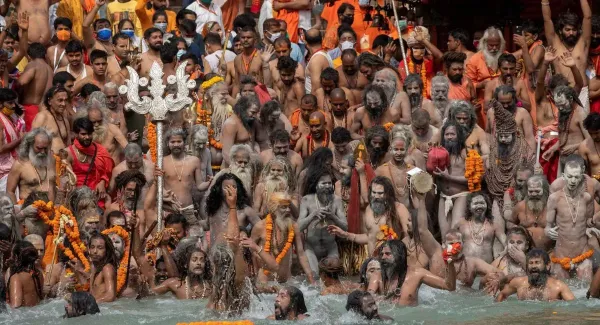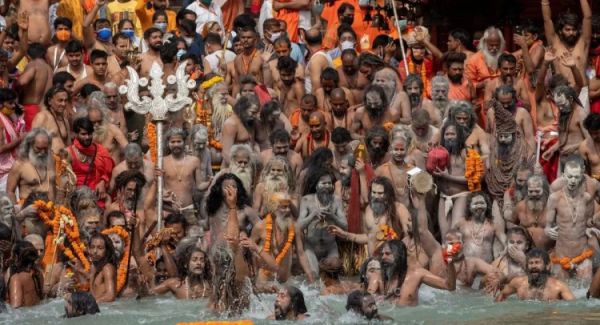
The highly anticipated Maha Kumbh Mela 2025, which will take place from January 13 to February 26, is expected to take place in Sangam Nagri Prayagraj. According to media sources, the state administration is ready to handle the huge event, which is anticipated to attract more than 40 crore people. Several significant FAQs have surfaced among the frenzy. We answer some of these important questions below.

What mythical meaning does the Hindu word “Kumbh” have, and how does it relate to the Kumbh Mela?
In Sanskrit, the term “Kumbh” itself means “pot” or “vessel.” The term’s meaning stems from a mythical tale in which the gods and demons churned a pot (or kumbh) filled with the nectar of immortality (amrit) out of the ocean during the “Samudra Manthan” (churning of the ocean).
The four holy places where the Kumbh Mela is held—Prayag, Haridwar, Ujjain, and Nashik—were established as a result of the pot allegedly spilling drips of nectar at certain points on Earth.
Which river’s confluence is the site of the Maha Kumbh Mela?
The meeting point of the Ganga, Yamuna, and Saraswati is the site of the Maha Kumbh Mela. Triveni Sangam is the name given to this confluence.
Maha Kumbh Mela Ceremonies and Rituals?
The Peshwai procession, which marks the ceremonial entrance of the akharas, ancient Hindu monastic communities, kicks off the Maha Kumbh Mela. In order to purify their souls and pursue moksha, devotees take part in the nightly aarti, light lights for the gods, and take a holy plunge (Snan) in the waters. Spiritual leaders use chants and sacrifices to the sacred fire during yajnas, or fire rites.
Previous Maha Kumbh Mela festivities
Deities are said to descend at the Maha Kumbh Mela to bless followers on Earth. The festival drew sizable audiences during the Gupta era (about the fourth to sixth century CE), when monarchs and rulers embraced its joyous spirit and constructed temples and bathing ghats beside the holy rivers. Indian monarchs proceeded to amplify the festival from the 12th century forward by making extravagant expenditures and carrying out rites that increased its opulence. People from many areas of life came to the Mela under British control, utilizing it as a forum to show support for or opposition to the liberation cause.
celebration of Maha Kumbh after independence
In January 1954, independent India held its first Maha Kumbh Mela.